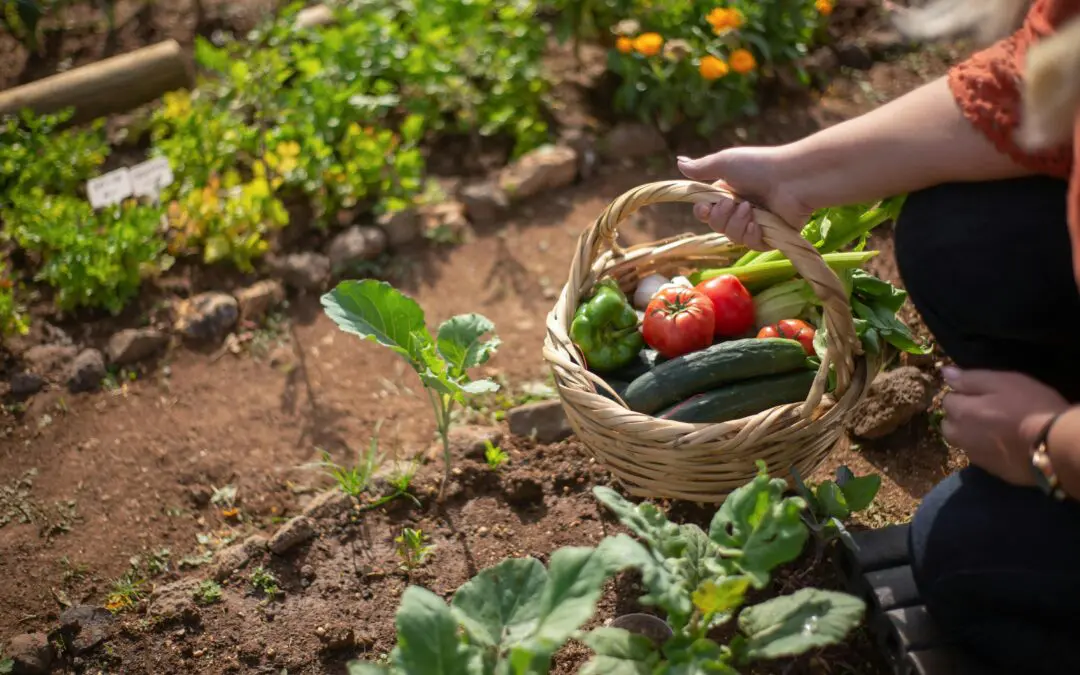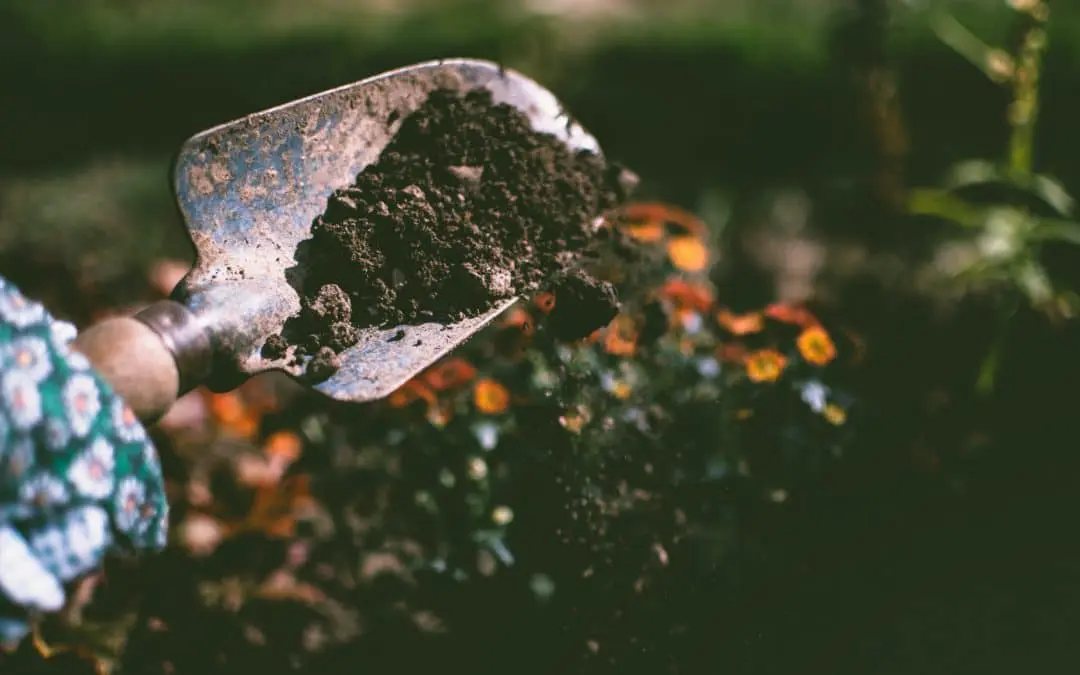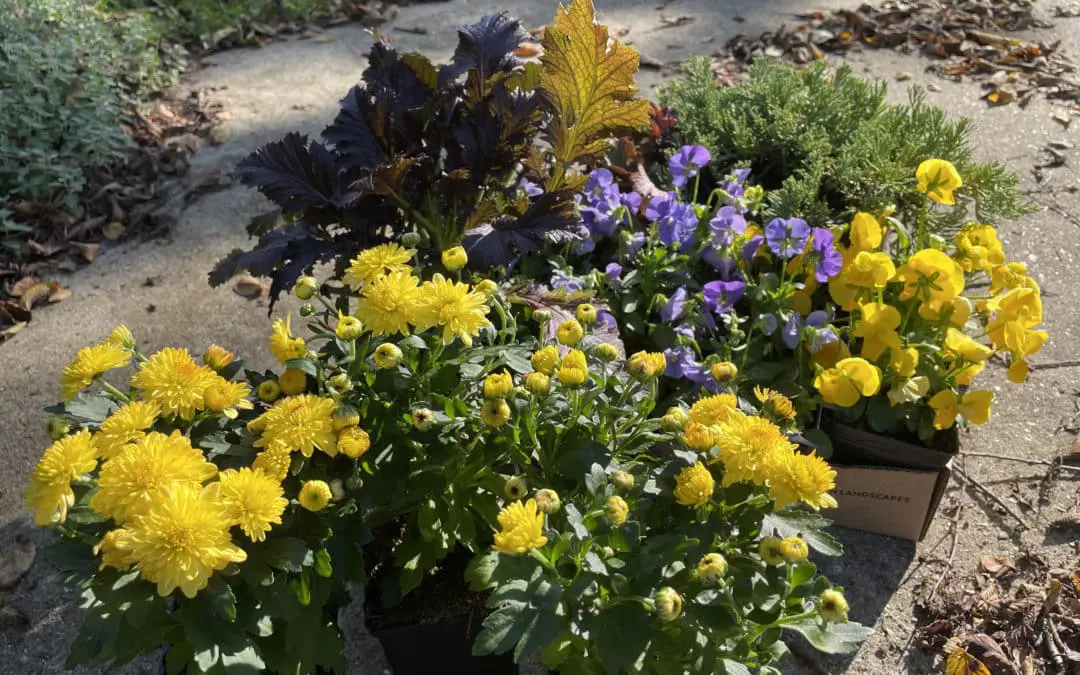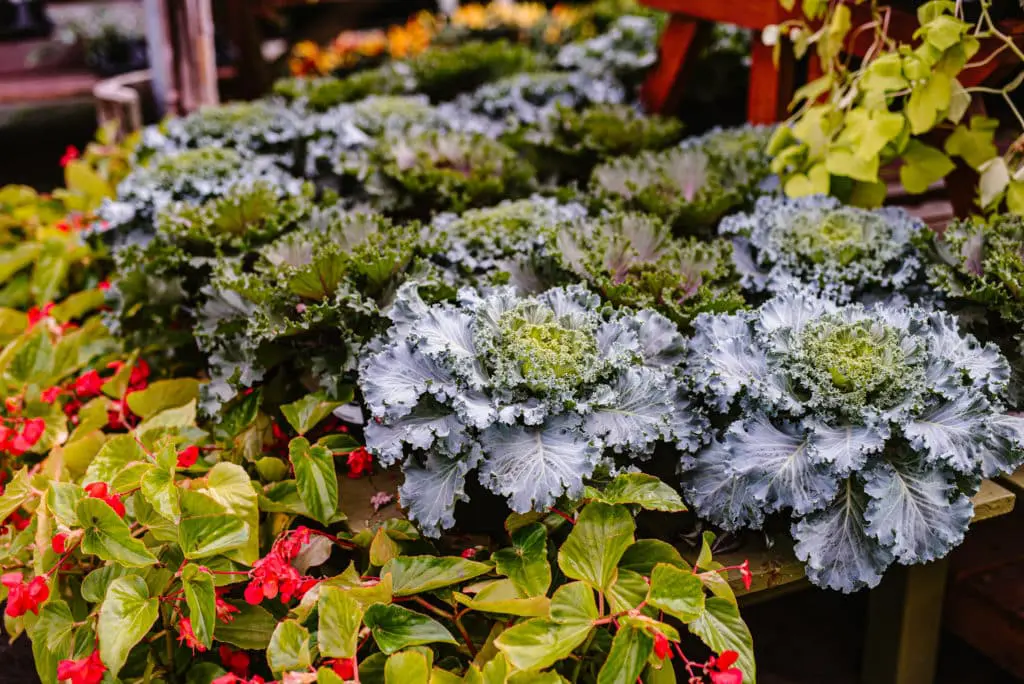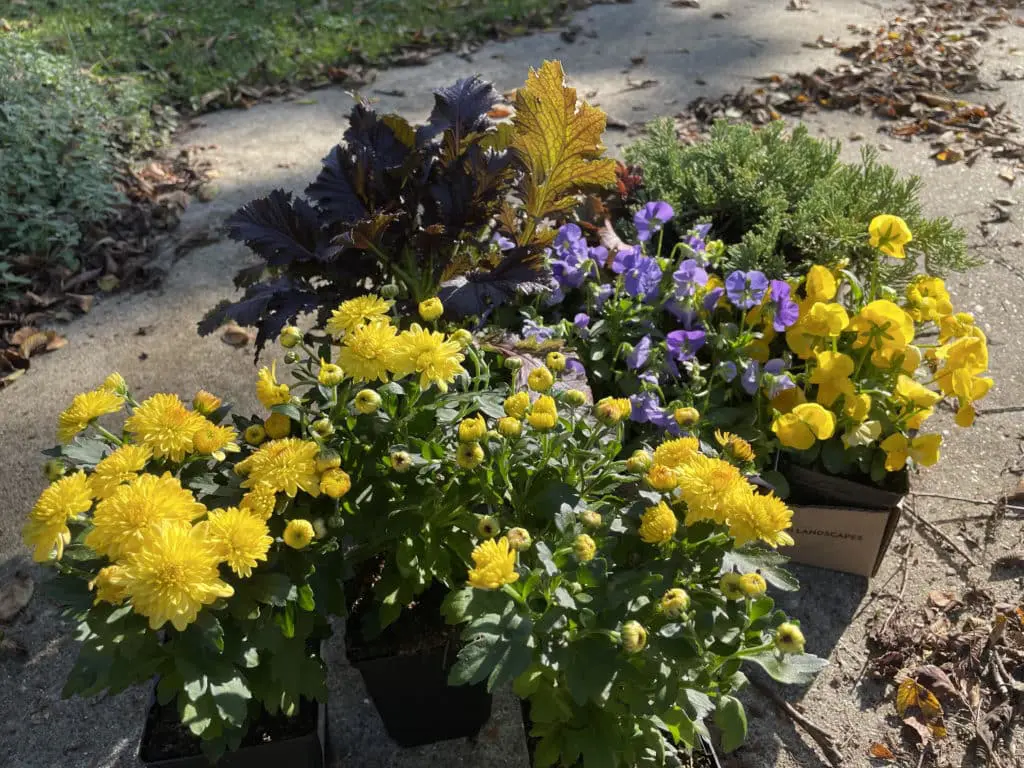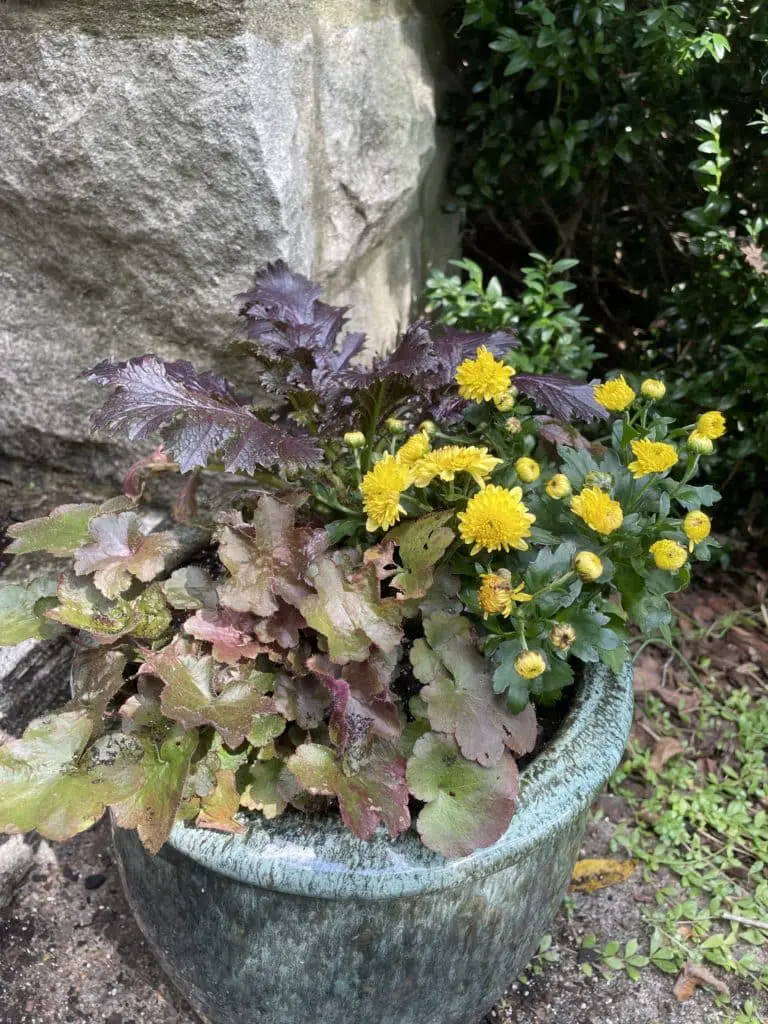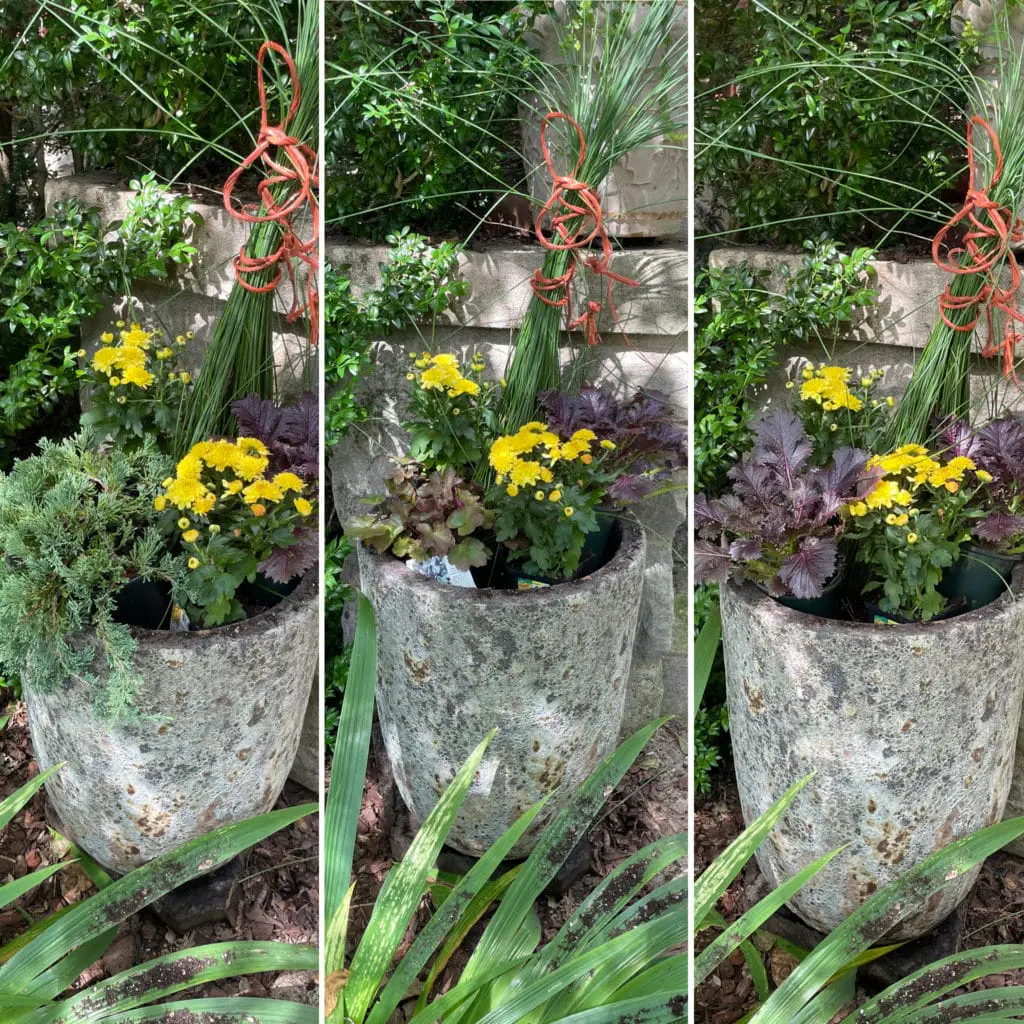
by Gloria Ballard | Sep 19, 2023
————
Gardeners who grow food may see Fall as a season of contradictions. On one hand, our kitchen-garden veggies are fading; homegrown-tomato season is coming to an end. On the other hand, it’s the start of the garden’s “second season” of sorts here in Middle Tennessee. As we pull out the dying squash and cucumber vines, the spent okra and tomato plants, we’re making space for vegetables that grow in cooler weather — so we can continue to have homegrown produce throughout the fall and, in some cases, well into winter.
Consider the possibilities!
-
- Leafy vegetables: Lettuce, spinach, kale, chard and other leafy greens planted early spring grow quickly when the soil is cool, and go to seed and die back as the weather warms up. Planted now, though, as weather begins to cool, these leafy greens will again thrive.
- Root vegetables: Once they sprout, carrots, turnips and radishes grow fairly quickly, and continue to survive even through frosty fall nights.
- Cole crops, or brassicas: broccoli, collards, cabbage, kale, bok choy and others are among the cool-season vegetables that grow in fall and are tough enough to withstand the colder weather to come.
Personal Farmer
Any time of year, the freshest, most flavorful and satisfying vegetables and herbs come from your own garden. Not everyone has the time, energy or ability to do the hard work and give the constant attention that’s required to enjoy bountiful harvest throughout the growing season, though. That’s when the Personal Farmer team at Gardens of Babylon can help.
“The Personal Farmer service is everything from design and installation of the garden to maintenance of seasonal vegetables,” says Chloe Barrett, a maintenance specialist on Gardens of Babylon’s design team.
Raised bed gardens are a good choice for most Personal Farmer gardens, Barrett says. The Gardens of Babylon team beds using cedar boards, which are naturally and organically resistant to pests and decay.
“We can build out 4×4-foot, 8×8, single or double high or a custom installation.” The beds are filled with a blend of garden soil and compost mix. The beds are built with a weed barrier underneath the soil that keeps unwanted plants from coming up from below the beds and prevents the soil from washing out.
Fall is the best time to prepare your kitchen garden for the following season, Barrett says. “That way, you have your beds in and they’re settled, you can enjoy an immediate fall garden, and the beds are ready in the spring.” She also recommends new installation of raised beds during the dormant season, when there’s a faster turnaround time before the inevitable spring backlog in building and maintenance services.
A Personal Farmer plan begins with a free 30-minute phone consultation, followed by a designated rep who will come to your home, assess the area, and make recommendations based on the proposed site, direction of the sun (“Most vegetables need six to eight hours of full sun to do best,” Barrett reminds us), and provide tips and tricks, “Things that help you have a successful garden,” she says.
Once the garden is built and planted, the service can continue with a contract for ongoing maintenance. “That’s everything from weed management, fertilization, compost tea spray, even harvest, depending on how hands-off the client wants to be,” Barrett says. The garden will still need a bit of individual attention from the homeowner, but a weekly or bi-weekly maintenance visit makes any necessary tending much easier.
If you’d rather DIY
If you’re handy with simple tools and enjoy the do-it-yourself aspect of gardening, you can, of course, build and plant your own raised beds.
“We also offer the raised bed kits that come complete with everything, and instructions on how to build,” Barrett says. Bagged organic soil is also available to fill the beds, and the garden center offers vegetable starts, perennial herbs and seed of heirloom vegetables.
And if you want to grow food and don’t know where to begin as a DIY, visit the Gardens of Babylon garden center and talk to an associate who can help you plan your vegetable garden, Barrett suggests.
Ready to get to know the Personal Farmer service at Gardens of Babylon? Book a consultation here.

by Gloria Ballard | Sep 19, 2023
Let’s get the science lesson about soil structure out of the way first, thanks to the University of Tennessee Institute of Agriculture: The ideal soil for crops, lawns and garden beds consists of a balanced mixture of coarse (like sand) and fine (like clay) particles. This is the best environment for providing required amounts of oxygen and water for proper drainage while still holding an appropriate amount of water within the root zones of plants.
Unfortunately, that’s not the situation found naturally in most Middle Tennessee landscapes. Heavy clay soil is abundant throughout the region, says Gardens of Babylon founder Mark Kerske. In addition, Tennessee soils may be very high in phosphorous, a mineral that is essential to plant growth but, in overabundance, can lock up other nutrients that plants need for proper growth.
“The soils in Tennessee are not only compacted due to heavy clay, but also depleted by the constant use of toxic fertilizers that have wiped out all the good, beneficial microbes in the soil,” Kerske says. “Step 1, in my opinion, is doing a soil test to find out the actual composition of the soil.” This test measures the soil’s pH level and points out nutrient deficiencies. It’s the best way to know the next steps to take to improve the growing conditions in your landscape.
Soil Amendments
“We focus on the biology in the soil,” says Kerske. “When we can balance the biology with the good microbes, we make the plants more resistant to diseases and pests, and you can have less of a weed problem.”
Compost tea is one of the best formulas for improving the soil, Kerske believes. Applications of this brew of living micro-organisms improves the health of soil that has been compacted — due to heavy equipment used during construction or renovation, for example – or depleted due to the overuse of chemical fertilizers.
In the fall, when an established lawn benefits from aerating and overseeding, it’s also a good time to apply a serving of compost tea. “Pulling out plugs of soil allows the tea to go deeper into the ground, so it’s working a lot faster that way.” Spring is also a good time for soil amendments. If soil is compacted, Kerske recommends three applications a year. “It’s taken years to make your soil bad, so it will take a couple years of applications to improve it, he says. “First and foremost, it’s all about the health of the soil.”
Good compost and worm castings incorporated into the soil can also improve soil by providing good microbial activity. “It’s a good start,” Kerske says.
Landscaping Services
For homeowners who need advice and help with troublesome soil and other lawn and garden issues, Gardens of Babylon offers a range of ways making it easier to enjoy a lush, properly managed landscape. Services range from mowing and landscape bed maintenance to regular turf treatments to keep the lawn looking its best, all using sustainable products and processes.
Homeowners can set up an annual maintenance contract with services that include:
- Spring and fall cleanups, typically in February or March ahead of the growing season, and again in the fall to prepare the landscape for winter.
- Professional pruning of ornamentals or fruit trees, cutting back roses, maintaining boxwoods.
- Mulching to prevent soil moisture evaporation and germination of weed seeds in garden beds in Spring, and a secondary layer of mulch in Fall.
- Planting annuals for seasonal color in garden beds and custom containers.
- Irrigation system management, including seasonal maintenance in Spring and Fall.
Other landscape enhancements can include applications of compost tea to improve soil health, lawn aeration and overseeding, leaf clean-up and bulb-planting in Fall (for Spring flowering), drain clean-out, mosquito control and other services that allow homeowners to enjoy their landscape without much fuss and bother.
Maintenance Plans
Landscape maintenance by Gardens of Babylon begins with a free phone consultation. “We set up a 30-minute window to talk through needs and expectations,” says maintenance specialist Chloe Barrett. “Then we come to your home for an on-site evaluation.”
The focus is on sustainable practices to maintain a landscape using a three-pronged approach: “Using organic materials, appropriate maintenance and paying attention to what’s successful in the landscape,” Barrett explains.
Throughout the growing season, regular maintenance includes a visit every couple of weeks.
Clients can begin a maintenance program at any time. To schedule a consultation for a Landscape Maintenance Program, visit the Gardens of Babylon website here.
Personal Farmer
For clients who have the desire for home-grown produce but not the time or ability to grow it, Gardens of Babylon offers a full-scale vegetable- or fruit-planting service — “Everything from designing raised beds, installing plants and providing ongoing maintenance,” Barret says.
The Personal Farmer crew makes regular visits to feed and weed and make sure everything is healthy. Harmful insects are eliminated with a spray of food-grade insecticidal soap. “We can come on a regular basis to keep everything in check,” she says. “Most of our personal farmer clients get a twice-a-year install and two or three maintenance visits through the season.”
Clients can begin a maintenance program at any time. To schedule a consultation for a Landscape Maintenance Program, visit the Gardens of Babylon website here.

by Gloria Ballard | Sep 4, 2023
——————
For spring, I decided to forgo the usual porch geraniums and go for something a little more interesting: a mixed container planting that would change as it grew, providing a more interesting look for our front steps. The container would be in dappled shade much of the day, and I remembered how much I like the more unusual begonias, so that became the planter’s focus. It worked well.
Now it’s fall, and time for a change. I usually set out pots of mums this time of year, but this time I’ve decided to mix it up. Instead of lots of mums taking the stage solo, I decided to have fewer of those fall cliches, but mix them in with other plants to have more impact. But what other plants?
Dana Stein, Gardens of Babylon’s VP of Operations, offered this advice in the spring: “Walk around a good garden center and think about what you like. Think about colors, and think about how to put them together for the best look, and what excites you.”
So, on a sunny Sunday afternoon in September, I took a stroll through the Garden Center at Gardens of Babylon to see what I could find.

Fall-Color Mixers
If you don’t usually see beyond mums for fall, you’d be surprised to find how many different types of plants can be combined to make an interesting container arrangement using annuals and perennials that sport the deep, rich and bright colors of the season. Consider a few that are tender — and therefore temporary, until they succumb to frost — but will brighten up your entry for as long as they can:
- Coleus: The rich colors of the foliage are sumptuous in summer, but really stand out in an arrangement for fall.
- Croton: These bright, multicolor tropical beauties are everywhere now, and provide an instant thriller for the pot. They won’t last through a frost outdoors in a container, but you can easily pot them up and bring them indoors to brighten your rooms, then return them outside next spring.
- Ornamental peppers: The orange or red fruits against their dark foliage are an unexpected touch in a festive fall container.
- Supertunias: You likely can find pots of these petite petunias in a range of fall-appropriate shades in garden centers now.

And of course, the tried-and-true and cold-hardy garden standards are still good for ornamental containers:
- Ornamental cabbage and kale: Tough enough to stand up to the coldest days.
- Pansies and violas: Their bright colors are great in the fall, and still great the following spring.
- Heuchera: This is a standard of spring and summer shade gardens, but it also soldiers on through winter, and does well (with care) in containers. The darker varieties are the most fall-appropriate.
- English ivy: While I don’t advocate its use in a landscape (too invasive!), it does, indeed, make a good, long-lasting “spiller” in a mixed container.
And while they’re not really planted in a container, remember that pine cones, berry sprigs, mini pumpkins, magnolia branches or leaves and other cut greenery can be used as fill-ins for fall-into-winter containers.
A Container of Fall Colors
In my Garden Center wandering, I looked for fall-theme plants that would meet the thriller-filler-spiller rule of container planting (a “thriller” plant that’s tall and bold, a mid-size, eye-catching “filler,” and a “spiller” that trails over the sides of the pot). For my tall, narrow container, which is about a foot wide, I came home with several possibilities: a pot of “Palace Purple’ coral bells (heuchera), yellow pansies, blue violas, a small, a sprawling ‘Blue Rug’ juniper, and two pots of purple-leaf mustard with the charming name ‘Miz America.’ I remembered that the pot already had a thriller plant that still might work – a tall and spiraling Juncus ‘Twisted Arrows, a rush that, unfortunately, never was much of a twister but was striking all summer nonetheless. And later I brought home three small pots of yellow mums, ready to burst into bloom.

This little collection offered several combination options, so after I clipped and repotted the begonias and pulled out the remaining roots of the creeping Jenny (which had succumbed to the digging of squirrels, sadly), I tried the new plants, still in their pots, in a variety of ways: the purple mustard and the bright yellow mums as fillers, the juniper spreading over the side; the heuchera instead of the juniper; three mums instead of one, one little pot of mums and one pot of violas, and so on.
I settled on one dark purple mustard, two yellow mums and the juniper to join the Juncus that I left in the pot.
This is a fall-theme container, but it won’t hold over into and through winter. In some climates, the Juncus (or rush) is semi-evergreen; the mustard can stand some cold weather but probably not prolonged freezing temps, and of course the mums will be brown and gone after the first hard frost. That’s when I can take them out and add yellow pansies.
Meanwhile, I had plants left over, so I created a second combination for another planter that makes use of the coral bells, the second mustard, and the extra little pot of mums.
Also, if you’re not the D.I.Y. type, our botanical design team can help you create beautiful containers. They are plant experts, and know what plants work well together, what kind of lighting that your plants will need, and what plants would be happy on your porch or in your yard! Reach out for a consultation today.


by Gloria Ballard | Aug 9, 2023
——————————————————————————–
It’s that time of year when, after summer’s unrelenting heat and humidity, we gardeners enjoy getting out and getting our hands in the soil again. Gardeners, it’s time to prep your landscape and garden beds for fall. Did you know we offer a Personal Farmer service at Gardens of Babylon? You can book a consultation here and we can help you create the garden of your dreams. But if you want to do it yourself, where do you begin?

Harvest
If you grow veggies in a kitchen garden, you’ve likely been harvesting tomatoes, squash, beans, okra, cukes and other summer favorites all along. You’ll keep doing that, of course, but it’s also a good time to pull or dig up any dead or dying plants, trim dead foliage, clean up leftover debris, and add another layer of mulch to any vegetable plants that are still going strong.
Beds of annuals and perennials also benefit from a cleanup heading into fall. Remove dead or dying foliage, sticks, twigs or other debris. Deadhead perennials and annuals as needed, and gather a bouquet of summer blooms to enjoy indoors while you’re at it.
And of course there’s the never-ending task of removing unwanted plants (aka weeds). If the summer heat drained any energy you had for pulling weeds, now’s the time to catch up on that necessary garden chore.

Bed prep
Garden beds that have provided fresh produce for you all spring and summer – whether they’re in the ground or raised beds — can use a little attention about now. Boosting the soil with compost, organic fertilizer, mulch or other amendments will send them into the next season in better shape. Top off raised beds with special soil mix or a topsoil blend, and work it into the existing soil.
Kitchen garden beds that will not be used outside of the growing season benefit from a cover crop – a fast-growing annual planted in late summer or fall and plowed under before planting time in spring. This “green manure” protects from soil erosion over the winter, provides organic matter to improve soil structure, and nutrients to boost growing conditions, suppresses weeds and provides habitat for beneficial insects and pollinators – a win all around.
Plants to consider for cover crops in established kitchen garden beds include alfalfa, crimson clover, hairy vetch, buckwheat and annual rye, along with mustard greens and daikon radish, two edible crops that benefit the soil, as well.
If you’re thinking of starting a new garden bed to plant next spring, now is the best time to act. You can start by laying cardboard and mulch over the soil in the new bed to suppress weeds that may grow; by next spring, the area should be ready for digging and planting.

Plant a Fall Garden
As the summer kitchen-garden crops begin to fade, make the transition to edibles that grow in cooler weather. Some suggestions:
Broccoli: When you buy transplants, make sure they are short and compact and have good, green color. Plant them in full sun about 18 inches apart. Water as needed to keep the plants from wilting, and apply a complete fertilizer when they are about 10 inches tall.
Collards: Sow seeds or set seedlings in full sun and well-drained soil, 12 to 18 inches apart. Provide about an inch of water a week and harvest by cutting the outer leaves as they reach full size.
Cabbages: Set out transplants in full sun and well-drained soil, spaced about 18 inches apart. Fertilize the plants when they’re about half grown, and harvest when the heads reach full size.
Leaf lettuce: Begin now to sow seeds in successive plantings every two or three weeks. Sow in rows 12 inches apart, and thin to 4 – 6 inches apart when seedlings appear. You can also sprinkle seeds over soil in large pots and planters. Harvest when the leaves are large enough to use.
Spinach: Sow seeds in full sun in rows 12 inches apart, and thin seedlings to one plant every 6 inches. Provide regular water, and harvest when the leaves are large enough to use.
Turnips (for greens or roots): Sow seed in full sun and well-drained soil ½ inch deep, 8 – 10 seeds per foot. When the seedlings are 4 inches tall, thin them to about three inches apart. You should have greens to harvest in about five weeks; if you grow turnips for the roots, harvest them when they are about 2 – 3 inches in diameter.
Garlic: Plant individual cloves (pointed ends up) two inches deep and about four inches apart in a sunny bed with well-drained soil. Harvest the bulbs next spring.
Visit Gardens of Babylon Garden Center for plants, seeds, tools, equipment, raised beds, soil, mulch and all you might need to prep your established or new garden beds for fall.

by Gloria Ballard | Aug 4, 2023
If you’re concerned about the environment, you want to make sure your landscape practices are not harming the planet with unnecessary chemicals, unsafe practices or excessive use of resources. Gardens of Babylon shares your concern, and can take eco-friendly care of your landscape with regular maintenance of your yard and gardens.
“It’s really a three-pronged approach: using organic materials, appropriate maintenance, and paying attention to what’s successful in the landscape,” says landscape designer Chloe Barrett, a maintenance specialist on Gardens of Babylon’s design team.
Fertilizers are sourced from organic materials (never glyphosate or other harmful chemicals); when a pesticide is called for, the choice is natural Neem oil or other non-chemical measures. Maintenance procedures include proper pruning practices, and timely trimming and care of perennial and annual garden beds.
“One of the biggest issues is site analysis,” Barrett says, explaining that designers consider the light, water and soil needs of plant placement in a design plan. If you continue to plant something that fails, you’re not just throwing away the plant, she says, you’re also wasting the resources that went into growing it and bringing it to your landscape. “Making proper recommendations for the site is critical to landscaping,” she says.
Considering the lawn
“Turf is, by nature, a bit of a sign of luxury,” Barrett says. “One of the big things I see is that clients are becoming more educated about the use of chemicals. People realize that violets and clover are appealing.”
For clients who still don’t share the appeal, Barrett admits that weed management without chemicals is a challenge. In that case, eco-maintenance includes regular aeration and overseeding to allow turfgrass to thrive, and manual control – digging and pulling weeds as they appear. It’s also important to make sure irrigation systems are in order and there are no drainage issues in the lawn that would affect the growth of turfgrass.
Gardens of Babylon’s natural turf care is a six-step program of weed control, fungal treatment, dethatching, fertilization and insect control.
“Those are the overarching issues that can be addressed for a more sustainable landscape.”
Maintenance on schedule
A typical regular maintenance plan includes two large cleanups each year, in February or March ahead of the growing season, and again in the fall to prepare the landscape for winter. Spring tasks may include pruning ornamental or fruit trees, cutting back roses, maintaining boxwoods, removing the first flush of cool-weather weeds, and a spring mulching to prevent soil moisture evaporation and germination of weed seeds in garden beds.
Throughout the growing season, regular maintenance includes a visit every couple of weeks so weeds don’t grow out of control “Many gardeners enjoy doing the work and just want us to come out and do the heavy lifting,” Barrett says. “We make sure our clients don’t miss the flowers for the weeds.”
Fall tasks would include cutting back perennials and putting beds to rest for the season, adding a secondary layer of mulch if requested.
Mosquito control is also among the available services, using organic methods. “It’s not a blanket pesticide, but it does prevent the formulation of larva over time,” Barrett says. Eco-friendly leaf services can be arranged in the fall. “We like to mulch the leaves on-site to return organic material to the soil.”
Personal Farmer
For clients who have the desire for home-grown produce but not the time or ability to grow it, Gardens of Babylon offers a full-scale vegetable- or fruit-planting service — “Everything from designing raised beds, installing plants and providing ongoing maintenance,” Barret says.
The Personal Farmer makes regular visits to feed and weed and make sure everything is healthy. Harmful insects are eliminated with a spray of food-grade insecticidal soap. “We can come on a monthly basis to keep everything in check,” she says. “Most of our personal farmer clients get a twice-a-year install and two or three maintenance visits through the season.”
Commitment to sustainability
Sustainable practices don’t stop once the landscaping crews are finished.
“We are working on a company-wide waste diversion policy of recycling and composting,” says Leah Mattix, marketing director at Gardens of Babylon. “Our garden center waste diversion from composting since 2019 is at 81,300 pounds. The landscaping roll-off dumpsters have diverted 234,000 pounds of landscape waste.
Landscaping initiatives for recycling, composting and reducing landscape waste include mowing and mulching to build organic matter on-site; mulching leaves to use in local garden projects; repurposing soil by sifting out debris and reusing it in local grading projects.
Rock and concrete pulled from jobs are recycled into aggregate for hardscape construction projects; pallets are given to vendors to be reused if they are pressure-treated; recycled or composted if they are not.
“We focus on water-wise irrigation. Our landscape designers will do sustainable designs like xeriscapes, edible landscapes, raised garden beds,” Mattix says. “We focus on local products; the stone, cedar beds, compost, and compost tea (“Develops healthy, living soil, key for healthy plants,” says Barrett) are all local.”
Even the Garden Center’s break-room supplies are either reusable or compostable. And for the convenience of customers who would rather recycle their plastic nursery pots instead of throw them in the trash, there’s a recycling bin at the Garden Center, near the loading zone.
Getting on board
Clients can begin a maintenance program at any time. “We set up a 30-minute window to talk by phone through needs and expectations, then come to your home for an on-site evaluation,” Chloe Barrett says.
To schedule a consultation for a Landscape Maintenance Program, visit the Gardens of Babylon website here.
